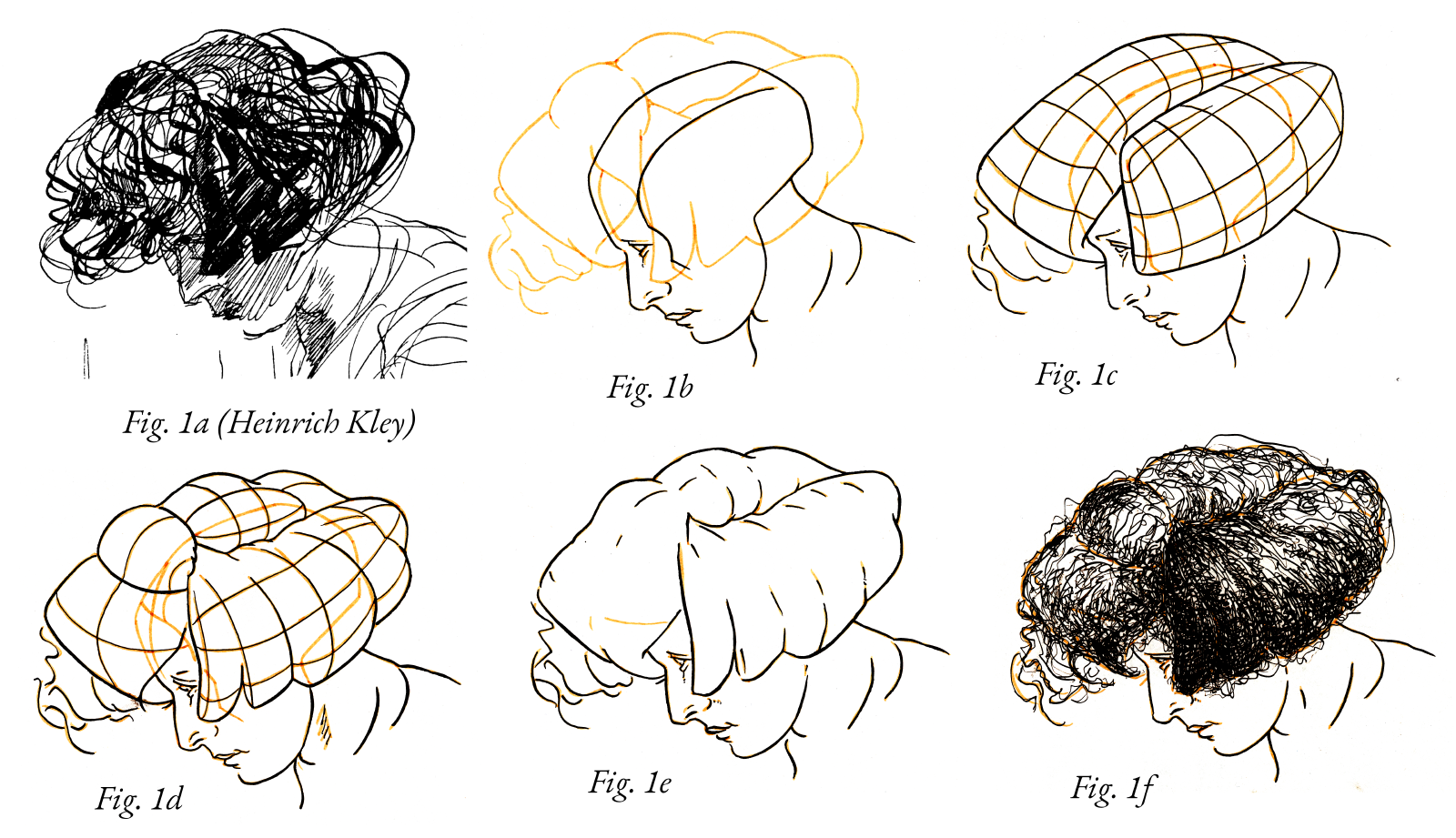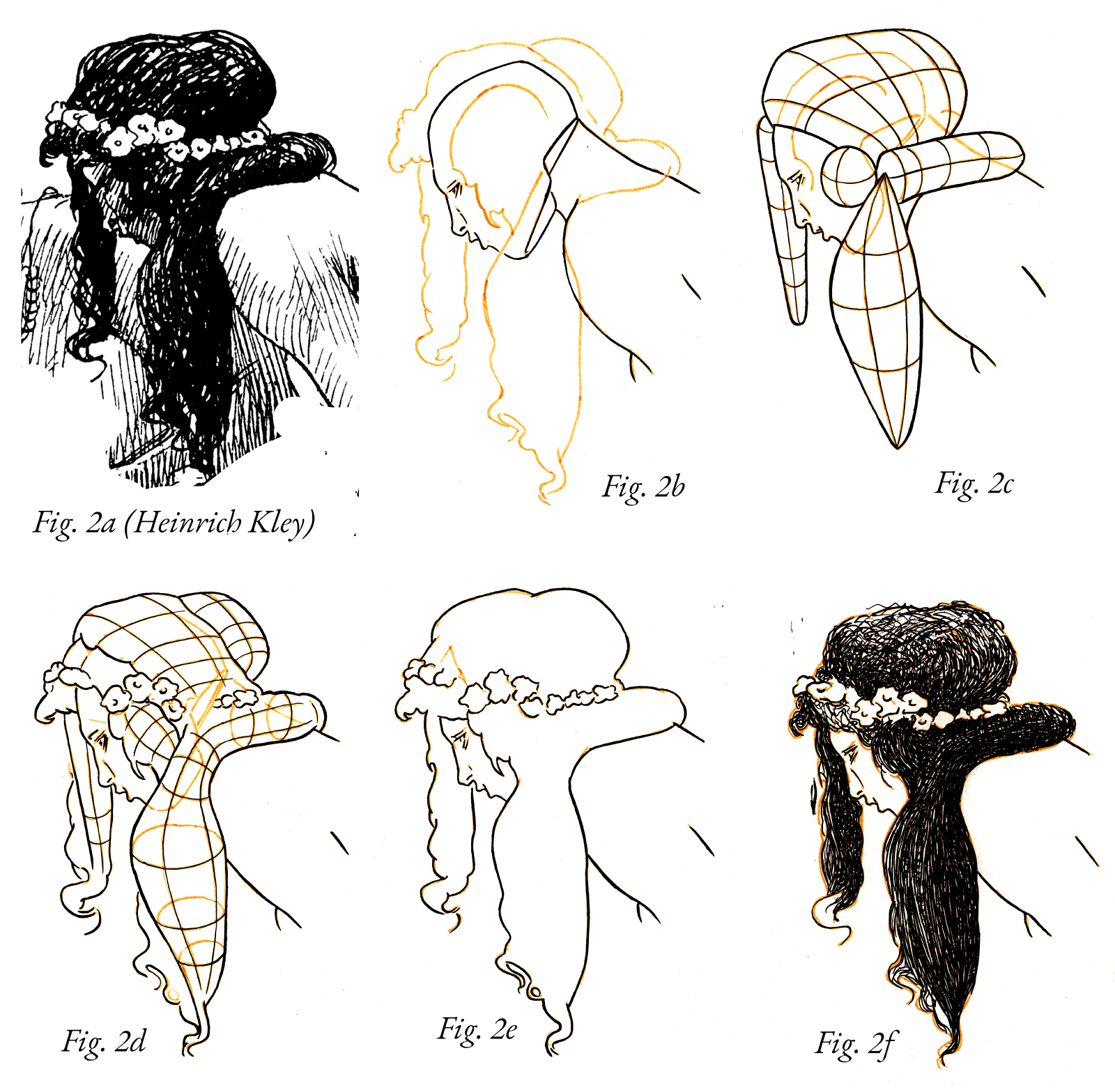
Drawing Demo: The Hair Helmet
This demonstration shows how to draw hair. You should generally not draw single strands of hair, but instead draw the hair's volume and use the hair as a texture.
The trick is to see the hair as an “helmet” that encapsulates the head. This is only sometimes the case, as examples 2 and 3 show.
The Hair Helmet

Figure 1a: The reference used for this demonstration: an illustration by Heinrich Kley.
Figure 1b: Depiction of the skull under the hair.
Figure 1c: Here, you see the hair as an idealized, simplified volume on top of the skull. Do not render separate strands of hair! It is this form you should be depicting, rendering its surface by using hair as a texture. In the front, you do see separate hair strands.
Figure 1d: A more detailed hair helmet.
Figure 1e: The outline shapes of the hair. Don’t draw them in your final render! Again, hair is used as a texture to suggest the form.
Figure 1f: A final render of the head, using hair as a texture to render the hair helmet form.
The Hair Helmet, Additional Forms

Here is a hair form that isn’t just a helmet; there are additional forms.
When hair strands are visible

Although you should focus on the hair helmet first, you often do also see separate hair strands. Here is an extreme example where there isn’t really a hair helmet; all the hair is moving around.